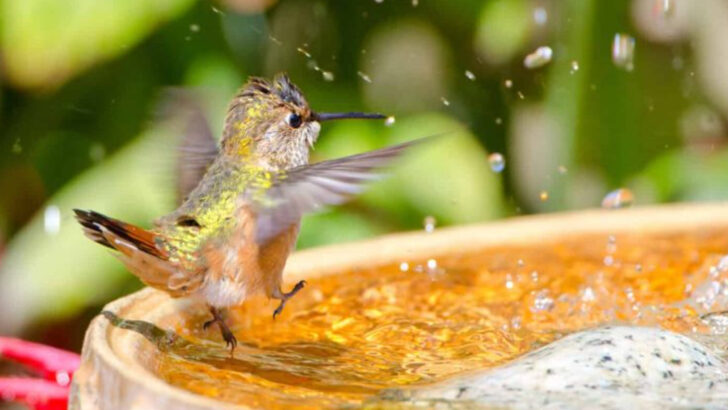Hummingbirds aren’t just pretty—they’re tiny, feathered rebels with secrets.
Sure, they look like floating jewels sipping sugar water, but there’s a lot more going on behind those shimmering feathers.
They fight. They flirt. They flash their throats like neon warning signs. And they do it all faster than your eye can follow.
Most backyard birdwatchers miss the drama completely. Blink, and you’ll skip an aerial dogfight. Look away, and you’ll miss a dive that could rival a jet plane.
These aren’t delicate ornaments fluttering through your garden. They’re fast-paced, high-energy marvels with behaviors so wild, they belong in a nature documentary.
Get ready to look at hummingbirds in a whole new way—because once you know what to watch for, you’ll never see them the same again.
Aerial Acrobatics
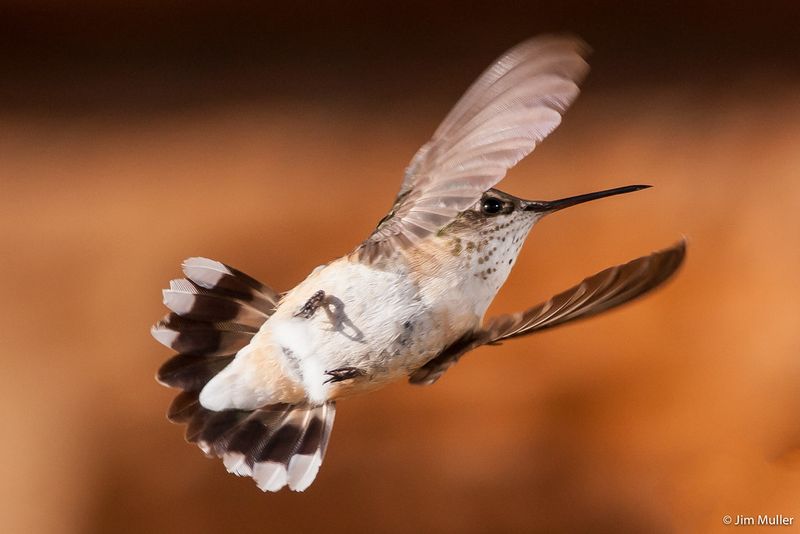
Hummingbirds are not just fast flyers; they are spectacular aerial performers. Their ability to hover in place, fly backwards, and even upside-down is a marvel of nature. These tiny birds showcase unparalleled agility, often engaging in complex air maneuvers to defend territory or attract mates. Watching a hummingbird’s aerial display is like witnessing a miniature air show, where every movement is precise and purposeful. Their wings beat so swiftly that they produce a characteristic hum, setting the stage for their aerial dance. Their acrobatics are not only a spectacle but serve critical survival functions.
Nesting Habits
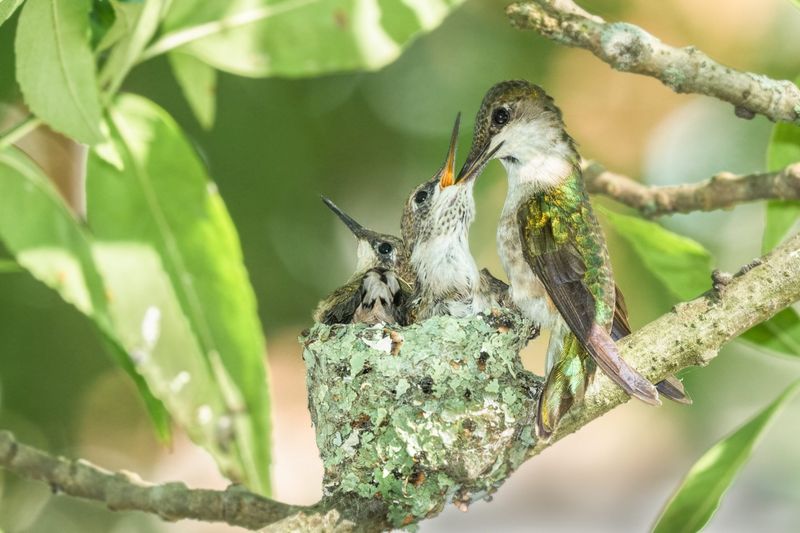
The nesting behavior of hummingbirds is a testament to their resourcefulness and creativity. Female hummingbirds are solely responsible for nest building, meticulously crafting their homes from spider silk and plant fibers. These nests are often no larger than a golf ball, tucked away in sheltered spots to protect from predators. Observing a hummingbird construct its nest is an exercise in patience and precision. Each piece is carefully placed to ensure stability and comfort for the eggs to come. The intricate design and placement of their nests highlight the mother’s dedication to her future offspring.
Feeding Frenzy
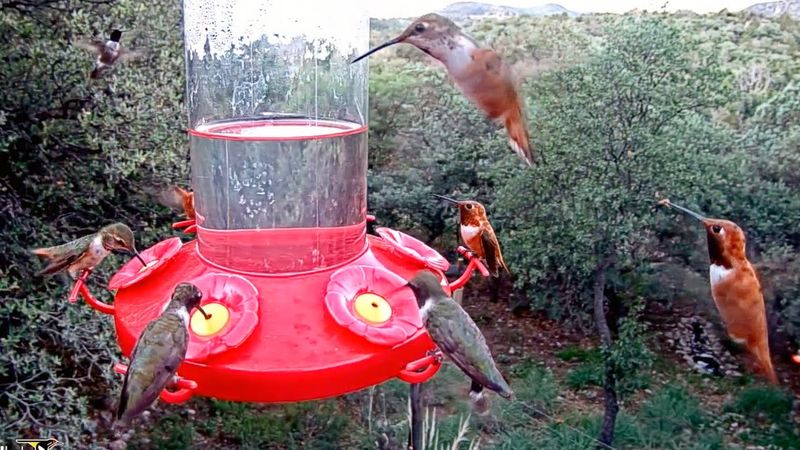
Hummingbirds have a reputation for their seemingly insatiable appetite, driven by their high metabolism. During feeding, these birds consume nectar from flowers or feeders with remarkable efficiency. Their feeding behavior can appear frantic as they dart between food sources, ensuring they meet their energy demands. It’s fascinating to watch them extend their long, specialized tongues to extract nectar, a process that happens in mere fractions of a second. The sheer speed and precision of their feeding are a testament to their adaptation to a high-energy lifestyle. Their feeding habits are essential to their survival.
Aggressive Displays
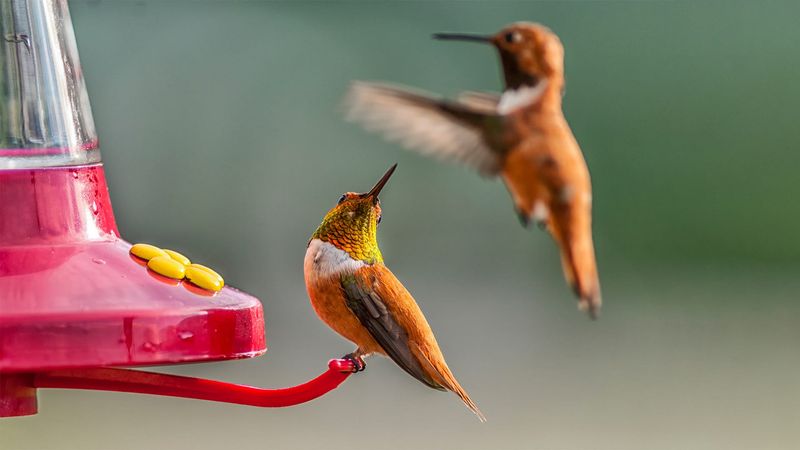
Despite their small size, hummingbirds are fiercely territorial, often seen engaging in aggressive displays to defend their food sources. These confrontations involve rapid chases, aerial maneuvers, and prominent displays of their vibrant plumage. Such behaviors are not just about food; they play a crucial role in maintaining dominance and securing mating opportunities. Witnessing these interactions is like watching a feathered duel, where speed and agility determine the victor. Their assertive nature is a stark contrast to their delicate appearance, highlighting the complexity of their social dynamics.
Mating Rituals
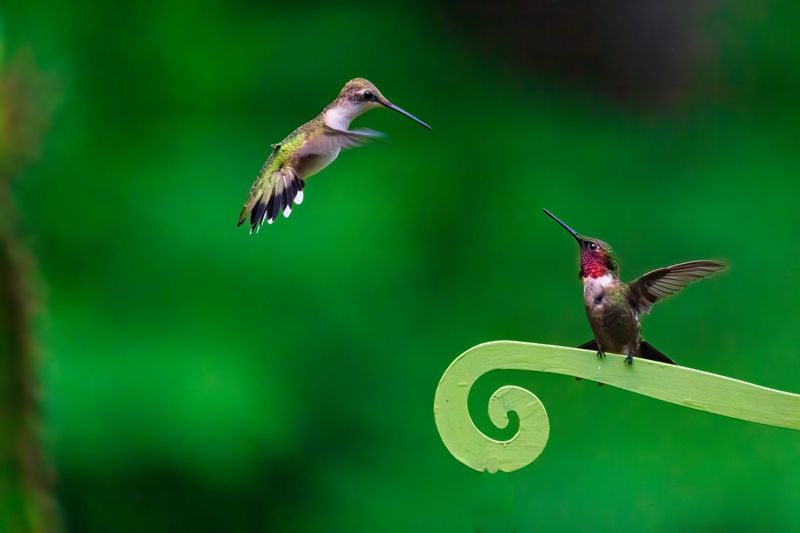
The mating rituals of hummingbirds are as elaborate as they are captivating. Males perform intricate courtship displays, involving swift flights and dazzling plumage shows to attract a mate. These displays are not just visual spectacles; they are strategic performances designed to demonstrate fitness and vitality. During courtship, the male’s feathers catch the light, creating a shimmering display that is hard to ignore. Such rituals are not only about attraction but also about communication, conveying messages of strength and agility. The artistry in their courtship is a testament to nature’s creativity.
Vocalizations
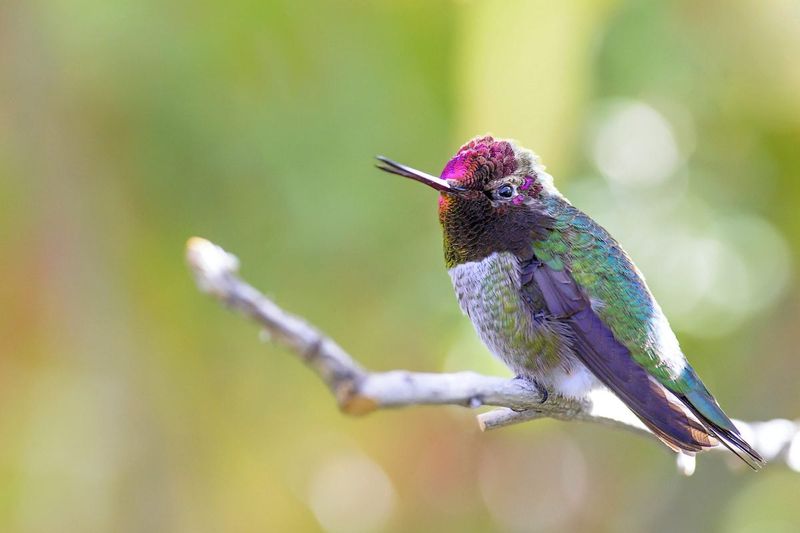
Though primarily known for their visual displays, hummingbirds also communicate through a range of vocalizations. These sounds, including chirps and whistles, serve various purposes from warning signals to mating calls. The complexity of their vocal repertoire is often overlooked but plays a significant role in their social interactions. Each call is distinct, corresponding to different behaviors or intentions. Listening to their vocalizations adds a new dimension to understanding these birds, revealing a hidden layer of communication. Their calls are as varied as their colors, adding to their mystique.
Sunbathing
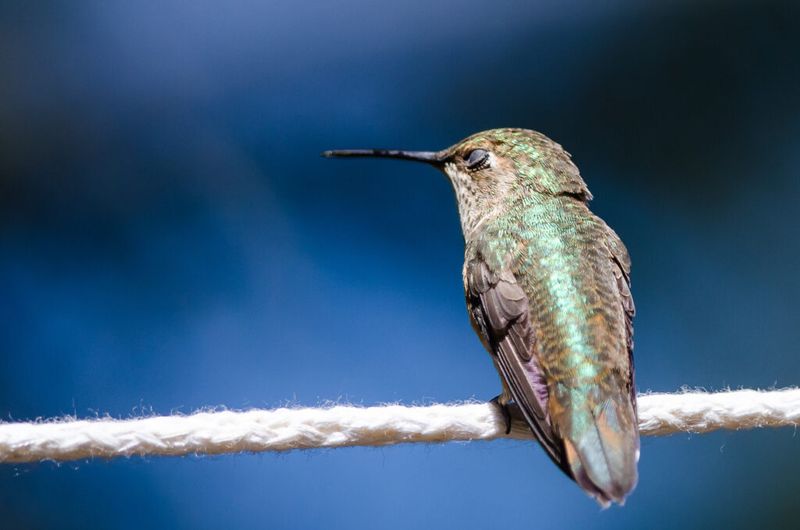
In moments of rare tranquility, hummingbirds can be seen sunbathing, an act that helps them regulate their body temperature and maintain feather health. During sunbathing, they position themselves to maximize exposure to sunlight, often spreading their wings and fluffing their feathers. This behavior is not just about warmth; it serves a dual purpose of grooming and relaxation. Observing a hummingbird indulge in sunbathing offers a glimpse into their need for balance between energy and rest. It’s a serene spectacle, reflecting their adaptability and the importance of self-care in the wild.
Rain Bathing
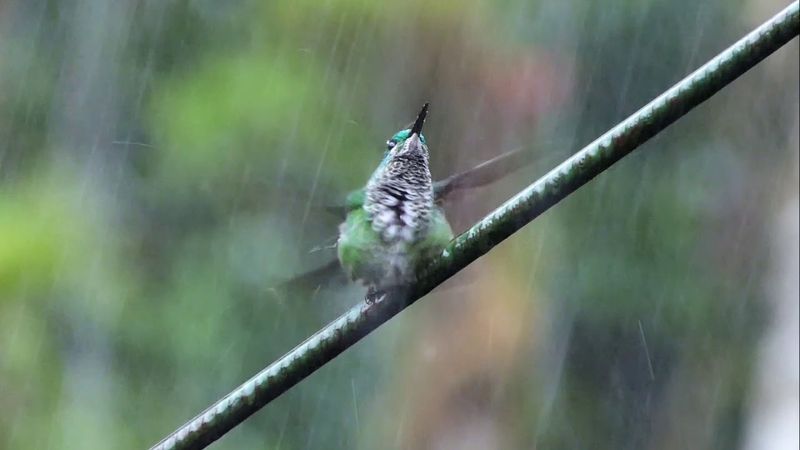
Rain bathing is another lesser-known behavior of hummingbirds, where they actively seek rain showers to cleanse themselves. Unlike traditional bird baths, they rely on natural rainfall to wash away dirt and parasites. During a rain bath, they fluff their feathers and shake their bodies to ensure thorough cleansing. This behavior demonstrates their ingenuity in utilizing natural resources for hygiene. Watching a hummingbird revel in the rain provides an insight into their natural instincts to maintain cleanliness and health. It’s a delightful and playful sight, adding charm to their character.
Hovering
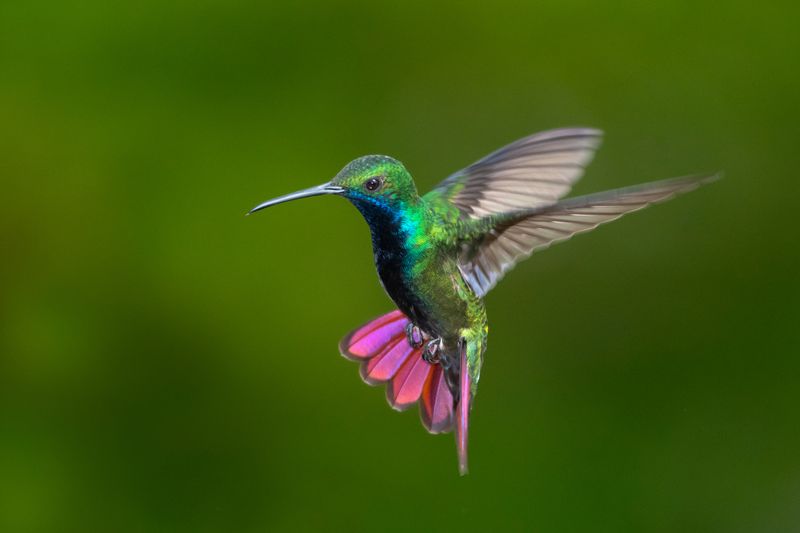
The ability of hummingbirds to hover is one of their most remarkable traits, setting them apart from other birds. This hovering capability allows them to feed on nectar from flowers without landing, maintaining perfect stability in flight. It’s a skill perfected by rapid wing beats and precise control, enabling them to remain stationary in mid-air. Observing a hummingbird hover is like witnessing an act of defiance against gravity, where balance and agility work in harmony. This behavior is crucial for their survival, allowing access to food sources that are inaccessible to other creatures.
Preening
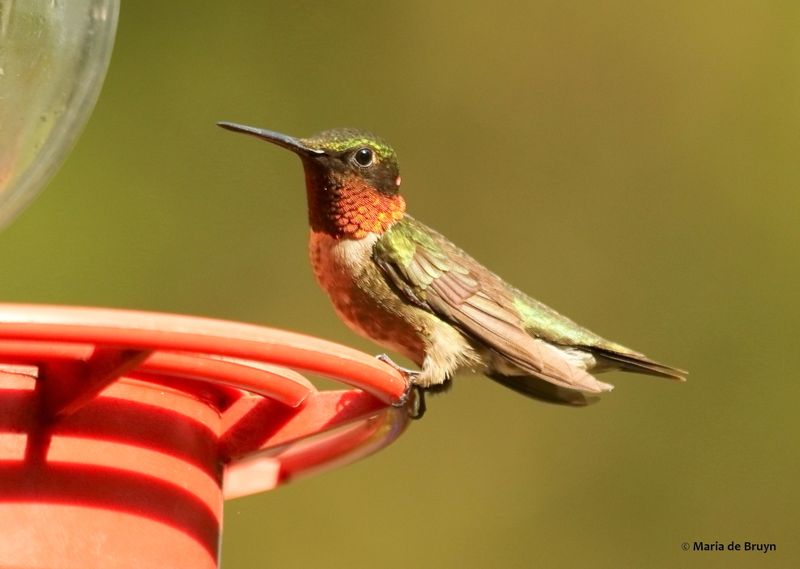
Preening is an essential behavior for hummingbirds, crucial for maintaining feather condition and overall health. During preening, they use their beaks to align feathers, remove dirt, and apply protective oils. This meticulous grooming ensures their feathers remain in top condition for efficient flight. Witnessing a hummingbird preen is an intimate moment, revealing their dedication to self-care and functionality. The process is a delicate balance between maintenance and protection, emphasizing the importance of feathers in their daily life. Preening underscores the intricate relationship between appearance and survival in the wild.
Migration Patterns
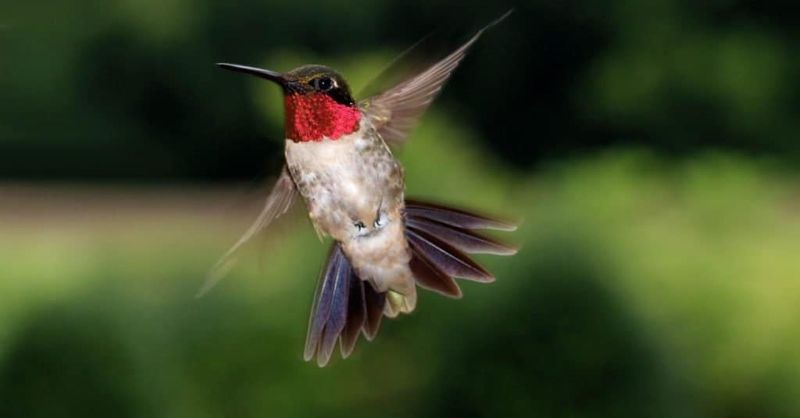
Hummingbirds are known for their incredible migration journeys, often spanning vast distances between breeding and wintering grounds. These migrations are feats of endurance, driven by instinct and environmental cues. Their ability to navigate across continents is a testament to their resilience and adaptability. Observing the migration of hummingbirds offers a poignant reminder of their tenacity and the challenges they face. These journeys are not just about survival; they are about the continuation of life across generations. Migration stories of hummingbirds inspire awe for their navigational prowess.
Sipping Sap
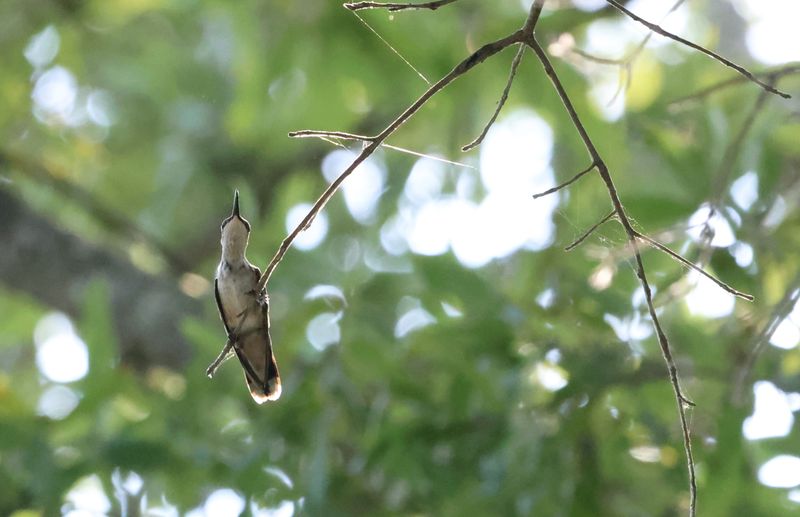
In addition to nectar, some hummingbirds have been observed sipping sap from trees, a behavior that supplements their diet. Sapsucking is often an opportunistic feeding strategy, tapping into resources created by tree-feeding insects. This behavior showcases their adaptability in utilizing available food sources. By sipping sap, they gain energy from the sugars, similar to nectar feeding. It’s a fascinating behavior that demonstrates their resourcefulness and ability to thrive in diverse environments. Observing a hummingbird sip sap offers a glimpse into their dietary versatility and survival strategies.
Risk-Taking
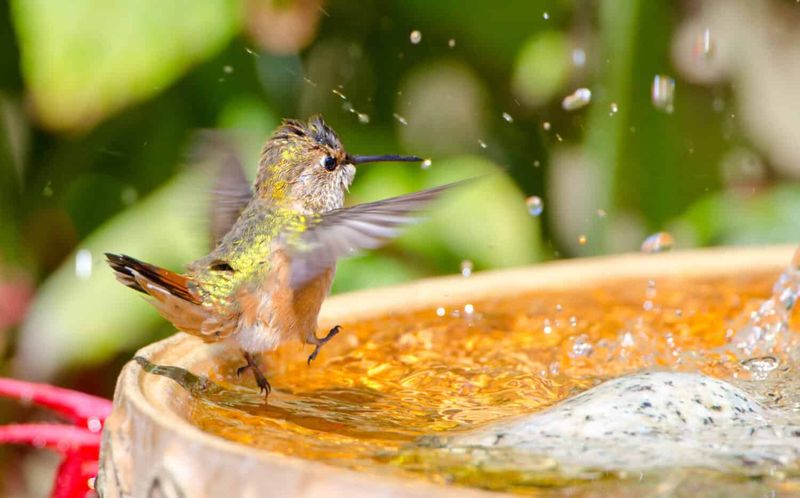
Hummingbirds are known for their bold and daring nature, often taking risks that belie their small size. They are fearless in defending territory, sometimes confronting much larger birds or animals. This audacity is a survival tactic, ensuring they protect vital resources and establish dominance. Observing such fearless behavior is both thrilling and humbling, revealing their indomitable spirit. Their willingness to take risks highlights their determination and the lengths they will go to ensure survival. This courage adds to their allure, marking them as remarkable creatures in the avian world.
Night Perching
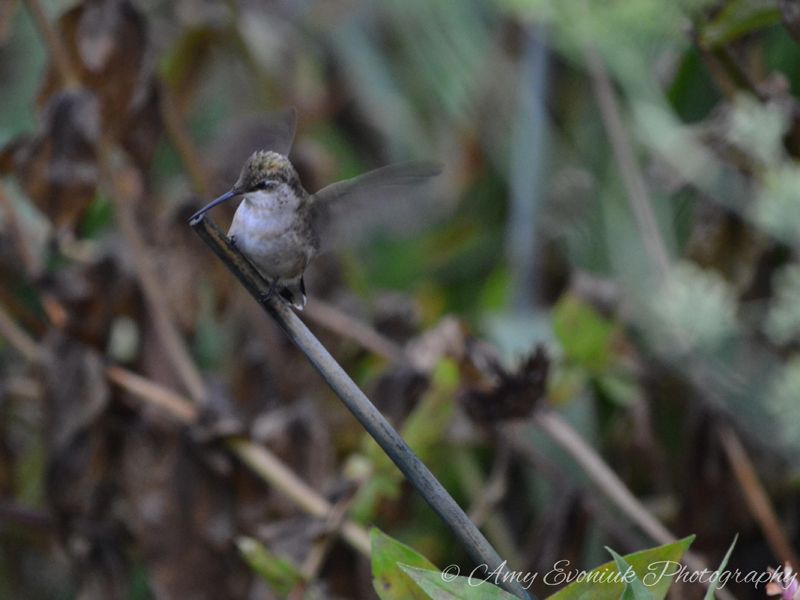
At night, hummingbirds enter a state of torpor, significantly reducing their metabolic rate to conserve energy. During this time, they perch in secluded spots, often remaining motionless until dawn. Night perching is a survival strategy, allowing them to endure cold temperatures and scarcity of food. Observing a hummingbird at rest offers a rare glimpse into their nocturnal habits, where stillness replaces their daytime energy. This behavior underscores their adaptability and the balance they maintain between activity and rest. It’s a peaceful scene, reflecting the unseen aspects of their daily life.

